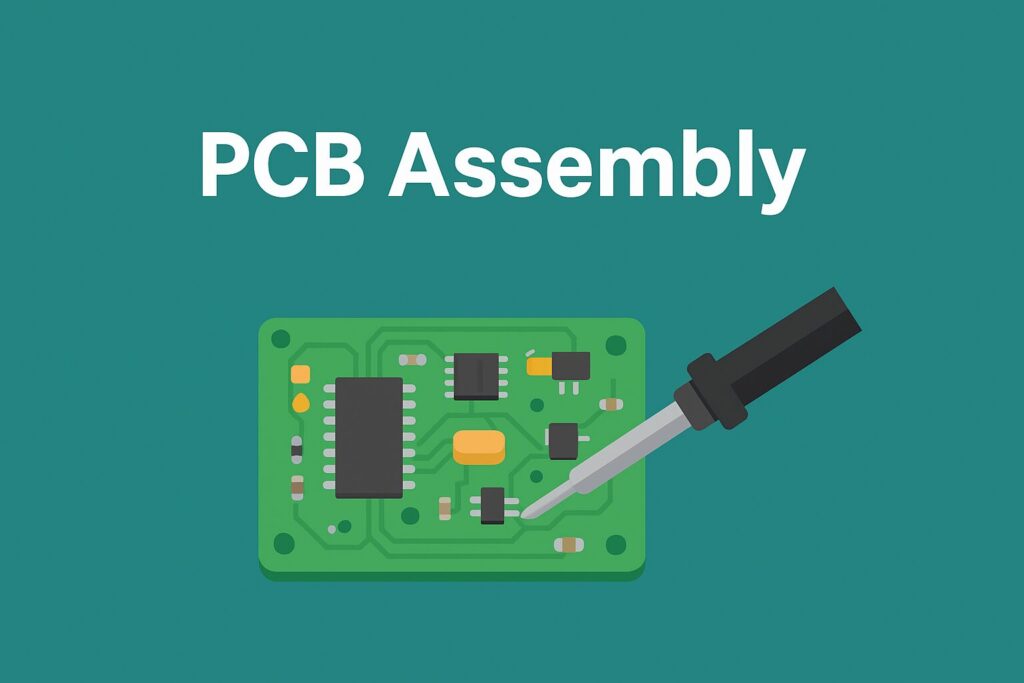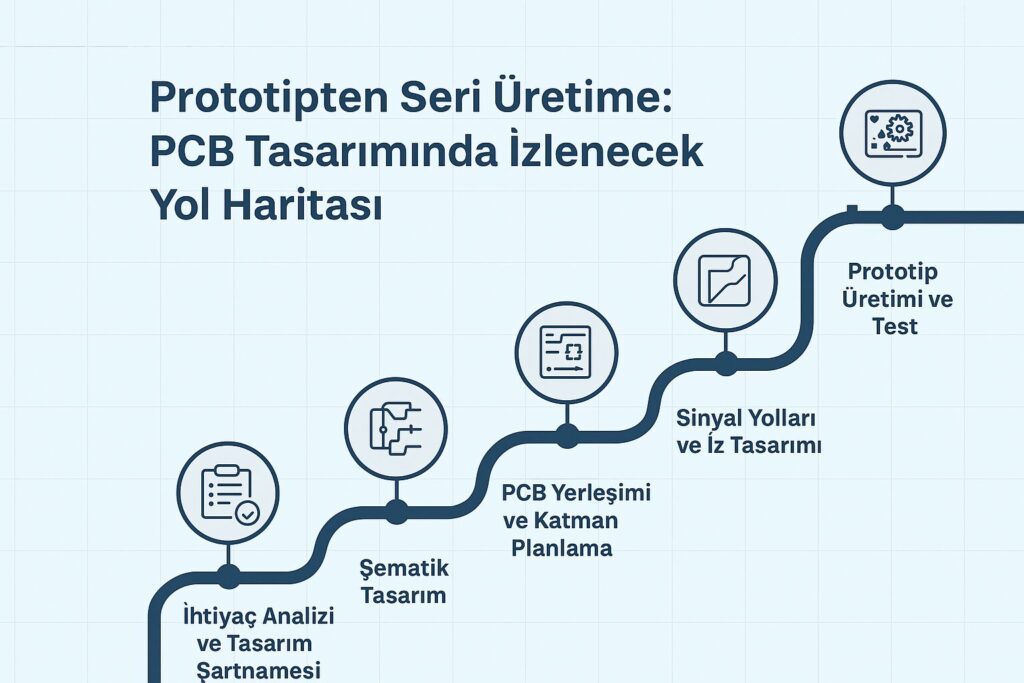Electronic system design refers to the process of planning, developing, and testing hardware and software (firmware) to perform a specific function. In short, it involves designing the “brain” of a device or machine from the ground up—a complete control system.
This process encompasses not just PCB design but the entire electronic architecture of a device: communication, power supply, control algorithms, and interfaces must all be considered from the start. From concept and schematic development to manufacturing and software integration, everything is part of the design.
Key Steps in Electronic System Design
- Requirements Analysis:
The system’s needs are defined. For a filling machine or a temperature control system, inputs, outputs, supply voltages, and control logic are specified. - Schematic Design:
Engineers select appropriate components—microcontrollers, sensors, drivers, and power circuits—and create the schematic. - PCB Design:
The schematic is translated into a physical printed circuit board. Trace widths, layer count, and insulation are optimized for reliable operation. - Software and Firmware Development:
Control software is loaded onto the microcontroller to read sensors, drive motors, and manage interfaces like displays or communication modules. - Prototyping and Testing:
The first prototype is produced and tested. Issues are corrected, and stability is verified before mass production.
Goals of Electronic System Design
The main goal is to create intelligent, reliable, and efficient devices. Key objectives include:
- Energy efficiency
- Precise control
- User-friendly interfaces
- Longevity and durability
Thoughtful system design also reduces production costs and enhances a company’s technological independence by allowing for tailored, custom solutions.
Examples of Industrial Electronic Systems
- Automation Systems: PLC-based controls, sensor integration, and motor drives, e.g., a filling machine that automatically regulates liquid levels.
- Industrial Motor Control: AC, servo, or stepper motors managed with custom driver boards using ICs like TMC, L6474, or DRV.
- Power and Energy Electronics: Power supplies, inverters, battery chargers, and UPS systems require precise high-current and voltage management.
- Medical Devices: Equipment like blood pressure monitors, ECGs, or lab devices demand high reliability and fault-free operation.
- Agriculture and Food Automation: Sensor-based control of climate, irrigation, or filling machines to optimize processes automatically.
Important Considerations in Electronic System Design
- Power Management: Efficient use of energy.
- Electromagnetic Compatibility (EMC): Protection against interference and parasitic signals.
- Industrial Robustness: Resistance to temperature, vibration, and humidity.
- Maintainability: Easy fault diagnosis and repair.
- Hardware-Software Integration: Firmware must perfectly sync with hardware for optimal performance.
Technologies Used
Modern systems combine various components:
- Microcontrollers: STM32, ESP32, PIC, AVR
- Communication Protocols: Modbus, CAN, UART, Ethernet, RS485
- Sensors: Temperature, pressure, current, position
- Displays and User Interfaces: LCD, Nextion, touch panels
- Power Control: MOSFETs, IGBTs, Triacs
The compatibility of these components determines the system’s reliability and performance.
Conclusion: Electronic Systems as the Foundation of an Intelligent World
Electronic system design is the core of modern industry and technology. It enables the development of intelligent devices, ensures efficient energy use, precise control, and seamless interaction between humans and machines. Well-designed systems improve machine reliability, reduce downtime, and simplify production processes.
By carefully integrating hardware, software, and communication technologies, complex tasks can be automated, and innovative functions can be implemented into existing systems. In short, behind every successful machine and functioning automation system is a thoughtfully designed electronic system. With a solid engineering approach, companies strengthen manufacturing competence and technological independence while efficiently developing new competitive products.
These systems form the foundation for a connected, intelligent world, where Industry 4.0, IoT applications, and smart devices work together to make processes safer, faster, and more efficient.
🔗 Get in touch with us :
Phone/WhatsApp: +41 76 212 8248
✉️ E-Mail: info@revantechnology.com
For detailed information about our services in electronics development & PCB design:
Revan Technology – Your partner for professional electronics and PCB development
Discover our recent work:
Revan Technology – Our Projects


